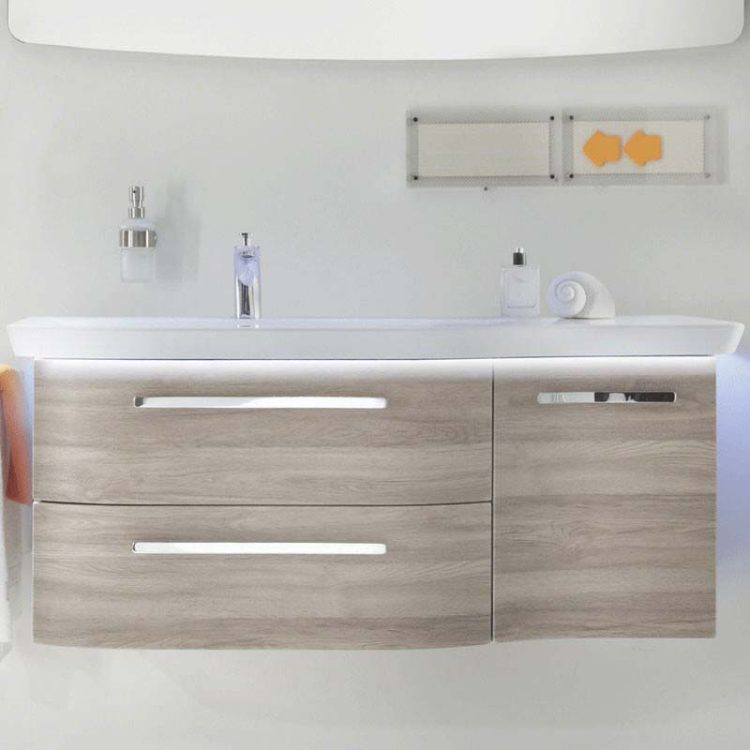Installing an electric shower is a job for a Part P qualified plumber. This is basically a plumber with some electrical skills. Replacing an electrical shower, however, can usually be done by a regular home DIYer. The plumbing and cabling will all be in place. You will just need to connect to it. This guide will explain how.
Safety note
If your new shower has a higher kW rating than your old one, your cabling may need to be upgraded. In that case, you’ll need a professional to take care of the job. Likewise, if you’re in any doubt that you’ve done the right thing at any point, abandon the job and call in a professional. If this means being without a shower for a while, so be it

Looking for an easy build, leak-free Electric shower Cabin? View Our Range HERE
Choosing your new shower
You’ll make your life easier if you choose a high-quality electric shower that’s been designed with easy installation in mind.
Look for electric showers that have multiple entry points for cables and plumbing. At a minimum, you want four entry points, top, bottom, side and back.
It’s even better if you have multiple connectors available. This may look more complicated but it actually makes your life easier. This is because it increases the chances that you can fit your new shower’s connections directly over the existing ones.
You also want the shower casing to have plenty of free space inside it so you can move tools. Swivelling connections for water are a definite bonus. At the very least, you want the connection blocks to be well designed (i.e. easy to use).
What you’ll need
Screwdriver (type will depend on your showers)
Spanner
Pipe wrench
(Chinagraph) Pencil/Marker/Masking Tape
Drill (bit will depend on the surface, if you’re drilling into tile, it’s best to use a tile bit)
Rawl plugs
Silicon sealant *
Filler*
* = not always needed
You’ll also find it very useful to have an extra pair of hands. At a minimum, it’s useful to have someone else hold the shower unit in place while you feed through the connections before screwing it to the wall.

Have you seen our, leak-free Electric shower Cabins? View Our Range HERE
Guide to installing an electric shower
The ten steps to fitting an electric shower yourself
Step 1
Turn off the electricity and water at the mains.
NB: if you’re using cordless power tools, make sure they’re fully charged before you do this. It’s even better if you can have a spare battery fully charged as well. You’re unlikely to need it but it’s reassuring to have it.
Step 2
Remove the old shower unit
In most cases, it will be obvious how to do this. You’ll just remove the screws and connectors and then lift the unit off the wall.
If, however, you get confused, or just want a bit of reassurance, then get out your current shower’s installation guide. Start at the end and follow it backwards. If you don’t have your current shower’s installation guide, you can probably find it online.
As you remove the shower, keep all the removable parts (e.g. screws) in a safe place. Once you have the shower off the wall, set it to one side. Hold onto it until your new shower is fully installed and working.
Step 3

Check the water connections on your new shower. Ideally, you should be able to fit them directly over the existing connections. If you can’t, then you’ll need to adjust them. If you’re not confident doing this, then back out of the job and call in a professional. Remember, if you damage the shower at this point, it won’t be covered under the warranty.
Step 4
Open up the shower and look at the electrical connections. Check their positioning against the existing cabling. If any adjustments need to be made then think carefully about whether or not you are competent to make them. If you’re in any doubt then, again, back out of the job and call in a professional.
Remember, getting electrical connections wrong won’t just void your warranty, it could literally kill you.
Step 5
Mark the position of the unit and its screw holes. Pencil is usually good for this. If it doesn’t work for you, use a marker or put down some masking tape and put a marker on that. If necessary, fill in any holes left by the old shower.
Step 6
Drill the necessary holes for your new shower. If you’re drilling into tiling, use a tile bit if you have one. If you don’t, your next-best option is a masonry bit. If you don’t have either of those, then your best option is to buy one. If necessary, put your old shower back until it arrives.
If, however, you can’t/don't want to do that, your last option is to use a hammer bit. Before you do, put masking tape on your tiles for grip. Mark the position of the holes on the tape so you know where you’re drilling. Then drill very gently. Keep in mind, however, that using a hammer bit on tiles is still risky. It tends to end up in broken tiles.
Step 7
Once you have your holes in place, fill them with rawl plugs and, if necessary, plug any gaps with silicone sealant. You may not need sealant but if you do, it’s important to use silicone sealant. This is designed for use in wet environments. Regular sealant will not stand up to being used in a shower.
Step 8
If possible, get an assistant for this part.
Feed the pipe and electrical cabling through the shower’s backplate. Then screw the shower into place. Once the shower is secured, you can proceed to connect the inlet pipe and then the electrical cabling. The live and neutral cores need to be connected to the terminals marked load. The earth core needs to be connected to the earth terminal.
If you are in any doubt about whether or not you have done this properly, abandon the job and call in a professional. Per the previous comments, you cannot take risks with electrical work, particularly not in a bathroom.
Step 9
Replace the cover, screw it in and put the rubber seal into place. Connect the rail, hose and handset. When positioning these, think about the height of the people who will use the shower. Try to put them somewhere that’s convenient for everyone.

Step 10
Switch your electricity and water back on and test your shower. If it’s not working properly, call in a pro to check your work. If that’s fine then you have a defective shower. That’s very rare (assuming you buy a shower from a reputable brand) but it does occasionally happen.
Hopefully, however, everything will be fine. If it is, you can go ahead and dispose of your old shower. Check your local authority’s rules on this.
Have you seen our, leak-free Electric shower Cabins? View Our Range HERE
Sauna and spa expert with years of experience in the field. You can see me featured in many leading publications as well as my own published research papers. Fitness, health, home improvement and Psychology are my main interests. I’ve worked in many roles from product designer to purchaser for spa products, garden furniture and tech to a hands-on webmaster.












